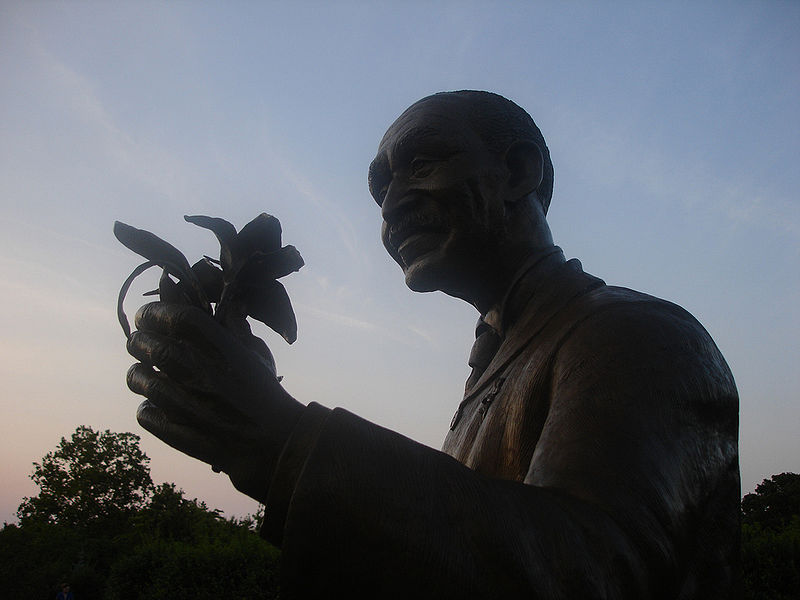Entries in Vision (2)
The young are visionaries; the old are the dreamers. The difference between the two:
 Tuesday, August 19, 2014 at 09:23AM
Tuesday, August 19, 2014 at 09:23AM  In our family we love to talk about dreams. Morning conversations often begin with, “Listen to this: last night I dreamed . . . “ We share how the Spirit visited us in the night and whispered to our hearts.
In our family we love to talk about dreams. Morning conversations often begin with, “Listen to this: last night I dreamed . . . “ We share how the Spirit visited us in the night and whispered to our hearts.
Dreams are part of the grand sweep of the Bible’s story: Jacob saw in a dream how the heavens and earth were connected by a great ladder; the prophet Daniel explained to the pagan king Nebuchadnezzar how the God of heaven spoke through dreams; Matthew’s gospel reveals how Joseph, Mary’s husband, time and again took direction through dreams, and in so doing Joseph protected the redemptive future of God embodied in the Christ child. Dreams are part of God’s great lexicon.
That God uses dreams should come as no surprise to any student of Jesus. What may be surprising is how the Spirit of God apportions dreams to older folk in greater numbers and depth than to the young. Peering far into the future, the prophet Joel saw the day of Pentecost coming. Joel also saw an important distinction:
And afterward,
I will pour out my Spirit on all people.
Your sons and daughters will prophesy,
your old men will dream dreams,
your young men will see visions.
In that great day of fulfillment, Pentecost, the apostle Peter repeated these verses, calling our attention to the different ways God speaks to the young and the old.
Young men are visionaries; old men are dreamers. The Spirit is behind them both.
We sometimes use “dreams” and “vision” as synonyms, but this is a mistake. I believe there’s a difference. Dreams reveal mysteries; visions show the future. Vision is a call to action; a dream draws us into conversation with God. Every work of God needs both. The Spirit is the wise scribe who writes upon the hearts of both young and old—but in different manner.
A great change is upon the church—in North America, at least. One generation is passing away; another is taking the lead. This change can bring danger if the old try to keep their position and power, and if the young try to wrestle control away from those who have built the house of God. Both attitudes can tear the body of Christ apart. Or we can treat each perspective as a treasure, and enrich both generations in the process.
The young and vigorous are see God’s future and run toward it. Vision (given by the Spirit) inspires and ignites them. Their lives will be lived in the decades ahead. It’s their responsibility to receive one world, and shape another. The future belongs to them. It is theirs to build.
The grey-hairs can give a great gift to this new generation: a divinely inspired perspective on the past, capable of furthering the future. Dreams are not simply hopes for a new day. Most dreams draw upon our past experiences and interpret them in new ways. Our personal history is the soil capable of new life. This is not only true personally, it’s true for the church.
Will the older generation let the young run and stride toward God’s grand vision? We should. Will the younger generation treasure the deep things of the Spirit already given? We should. The church is one family under one heaven, a family young and old. Together we carry God’s grand mission forward.
Three Lives, One Lord, and Billions More
 Wednesday, October 2, 2013 at 03:53PM
Wednesday, October 2, 2013 at 03:53PM  Here are three people separated by time, location, and their vision. Grab some coffee and check out their stories. We’ll talk on the other side after you finish . . .
Here are three people separated by time, location, and their vision. Grab some coffee and check out their stories. We’ll talk on the other side after you finish . . .
Agnes of Albania
Agnes lived entirely within the twentieth century. She was born just before World War I, which encompassed all of her native Europe. As an eighteen year old she found a peaceful place in Ireland where she could learn English and draw closer to God. At twenty-six she left Europe for Central Asia where she settled for the rest of her life. Not long after she arrived in Asia, World War II occupied nearly everyone’s attention—except Agnes. She lived far away from most of the war, but she witnessed a quieter devastation: her adopted city suffered great famine and mass starvation. She remained well fed and safe behind the walls of the Catholic school where she worked as a teacher.
The religious walls could not hold her for long. She left the school and lived in the city, helping those who suffered from violence or poverty. There, in Calcutta, India, she became a beggar herself, pleading for medical supplies and the resources to feed others. Other women rallied to her and together they established a lasting organization to love the “poorest of the poor” in the name of Jesus, sometimes doing nothing more than cradling dying people in their arms, so they would not die alone.
As the decades mounted her organization grew and eventually Agnes caught the attention of the world, which gave her the Noble Peace Prize in 1979, which she accepted under the name of Mother Teresa.
Nicolas of France
Four hundred years earlier a boy named Nicolas became a soldier—briefly. Though he served honorably he left the army as soon as he had fulfilled his requirement. He returned home one winter, feeling dry and barren, like the great tree that stood on a hillside in his hometown of Herimenil, France. Nicolas found God in that tree. He knew the tree would put forth new life in the spring, so he reasoned (and prayed) that God would do the same in him. Nicolas retreated from the chaos of 17th century Europe and became a dishwasher in a priory, where he took the name Lawrence of the Resurrection—a strange name for an uneducated man with an inglorious job. He washed dishes in the priory kitchen for the rest of his life, and discovered the presence of God in everyday tasks. Together, Lawrence and Jesus cleaned pots and pans all day long. His only other activity was writing an occasional letter to some friends, and receiving visitors when they came to see him.
Nicolas died. The world took no notice. After his death an acquaintance gathered Nicolas’ letters and journals into a thin volume of encouragement for religious readers. One person recommended the book to another, among them a British preacher named Wesley and an American pastor named Tozer. Eventually millions of Christians sat at the feet of the departed dishwasher and discovered The Practice of the Presence of God. The book Lawrence never wrote has touched millions of lives.
George of Tuskegee
George was born slave just a year or two before slavery came to an end in America. Freedom came to the slaves when he was a toddler; his former owner took George into his home and raised George and his brother, James, as part of the family. Even so, growing up in Diamond Grove, Missouri, meant the legacy of slavery was everywhere. George referred to himself as a piece of property, calling himself “Carver’s George,” because his master/stepfather’s last name was Carver. George had a patchwork education, but received enough to kindle the fires of learning for a lifetime. Two degrees and three states later, George became a faculty member of the Tuskegee Institute, where he remained for 47 years as a botany professor.
Carver’s George (by then known to the world as George Washington Carver) developed more than 300 uses for the peanut, a crop he believed could replace the cotton-growing legacy of the south. He also discovered hundreds more uses for soybeans, sweet potatoes, and pecans. His work attracted the attention of Presidents and the kings of industry.
George Washington Carver’s genius was rooted in his faith. As a Christian, George thought it best to consult the Creator regarding the creation. He recorded this playful conversation with God (sometimes known as “prayer”):
One day I went into my laboratory and said, “Dear Mr. Creator, please tell me what the universe was made for.” The Great Creator answered, “You want to know too much for that little mind of yours. Ask something more your size, little man.” Then I asked, “Please, Mr. Creator, tell me what man was made for.” Again the Great Creator replied, “You are still asking too much.” So then I asked, “Please, Mr. Creator, will you tell me why the peanut was made?” “That’s better,” God answered. “What do you want to know about the peanut?”
What was his own opinion of his success? “I didn’t make these discoveries. God has worked through me to reveal to his children some of his wonderful providence.”
***
. . . What?!? You’re still here? Great! Here’s what’s on my mind:
Recently I tweeted, “Christian leadership isn’t about attaining your vision, it’s about helping others reach God’s vision for them.” To my surprise several people pushed back by responding that there is only one vision, the “Jesus vision.” I began to wonder if some people thought Jesus provided a one-size-fits all vision.
Agnes, Nicolas, and George demonstrate the possibilities of life lived in concert with Jesus. We need only ask:
- What does the faithfulness to God look like in each life?
- Does Jesus have one vision for us, or many?
- As the family of God, how do we recognize his vision for others?
- How can we encourage them to fulfill God’s best for them?

